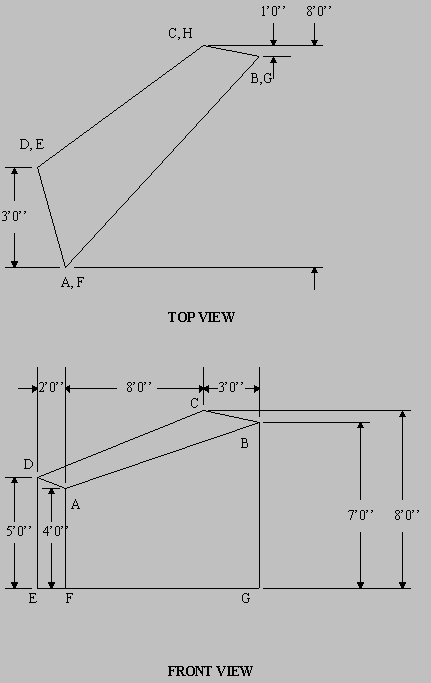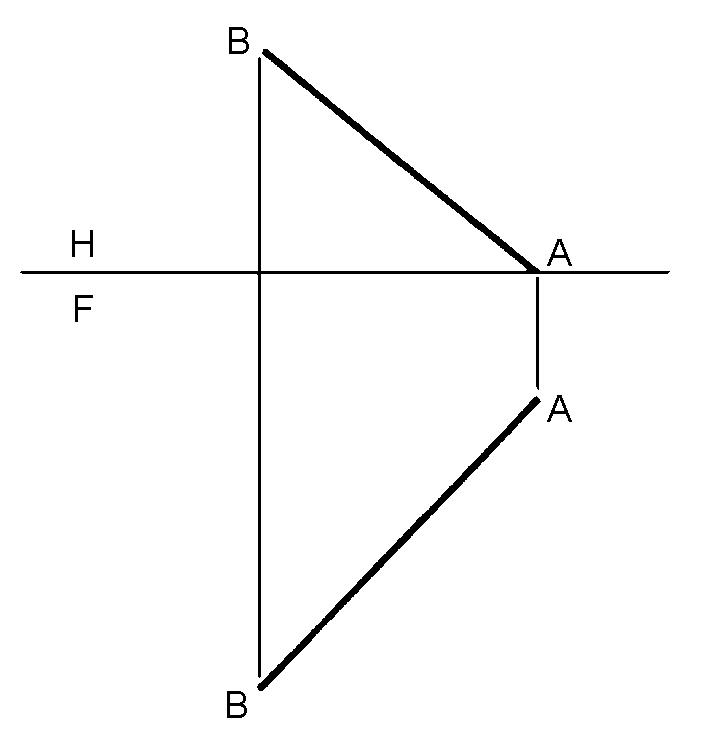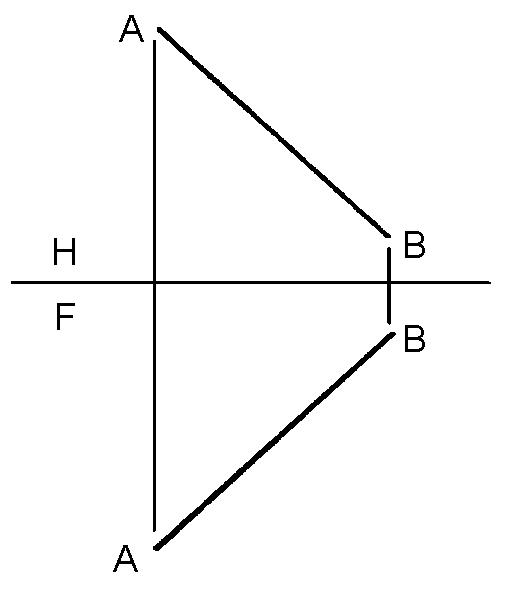- A storage bin has been designed. It is shown in the following figure. Before constructing the bin, raw material has to be prepared. As illustrated, six cylindrical columns made of steel, AH, BI, CJ, DK, EL, and FG, are needed. Six rectangular beams made of steel, AB, BC, CD, DE, EF, and AG, are needed. The top surface, ABCDEF, should be covered by a sheet of steel.
- (1). Use a spreadsheet to prepare a list indicating the true length of each of the six columns and beams.
- (2). Calculate the weight of the top cover sheet, ABCDEF. Assume that the thickness of the steel sheet is ¼."

- Two tubes AB and BC are to be connected by a third tube AC, thus completing the circulation of air among the three locations, A, B and C. Note that location B is at the top of a hill. The top of the hill is 20 ft north of A and 30 ft east of C. The slopes of AB and BC are 60 degrees and 30 degrees, respectively.
- 1. Draw the front, top, and right side views of the design configuration.
- 2. Find the true length of the third tube AC.
- 3. Find the true size of the angle for the special fitting.
- The revolution method in descriptive geometry assumes that the observer is considered to occupy a fixed position while the object is rotated into different positions to obtain different views. Certain problems can be more easily solved by revolution. The following problems to calculate the true length and slope of lines should be solved using the revolution method.
- 1. In Figure 1, find the true length of a given line AB.
- 2. In Figure 2, find the true slope of a given line AB.

